Benin. Part IIMap
May Cows can be conveniently transported on the back of a motorcycle. 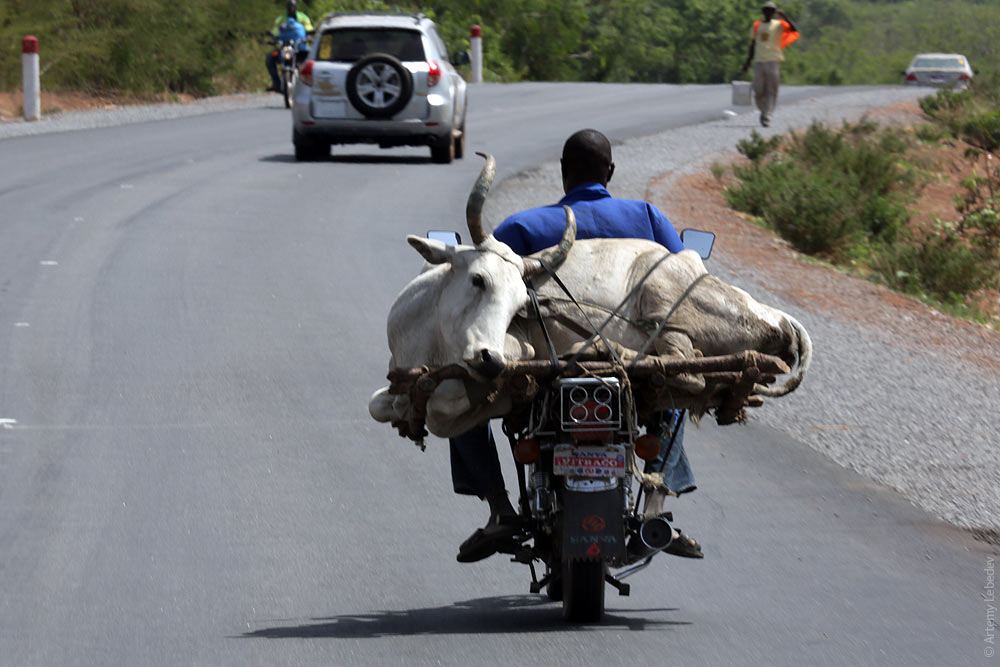 CotonouMapBenin’s main city. This is where the president lives, but it’s not the capital. The country’s main telecommunications palm tree (see Botswana, Zambia or Mauritius) is also located here. 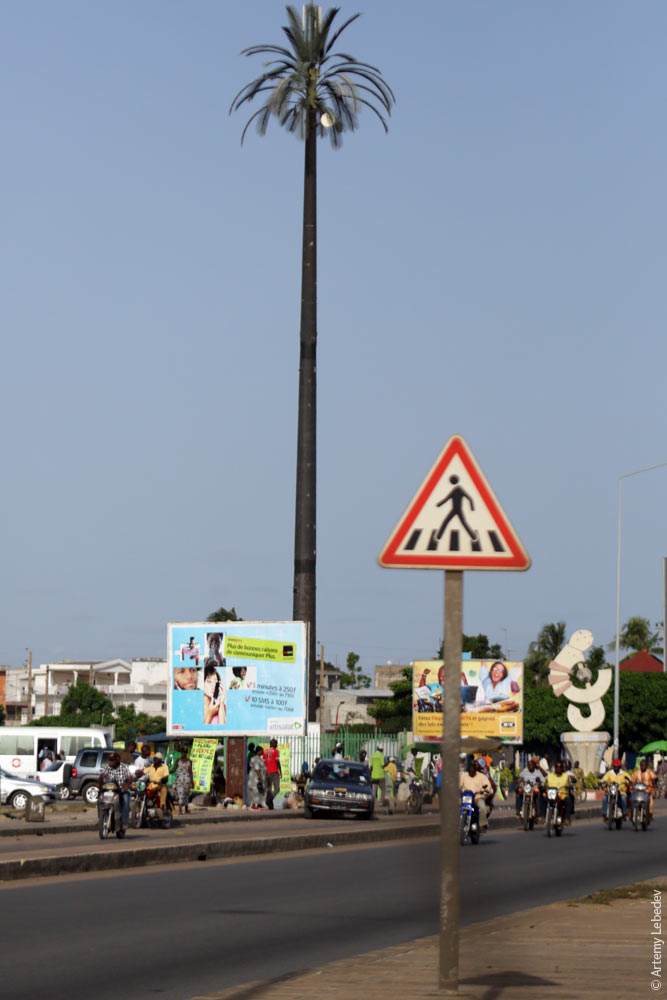 The traffic lights are diverse. 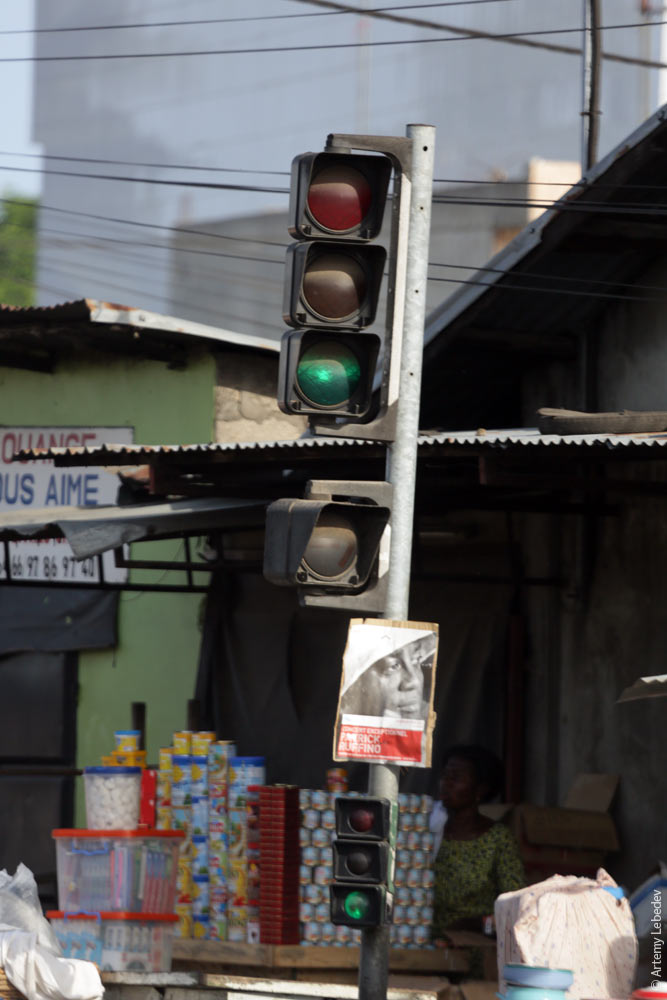 A car wash. 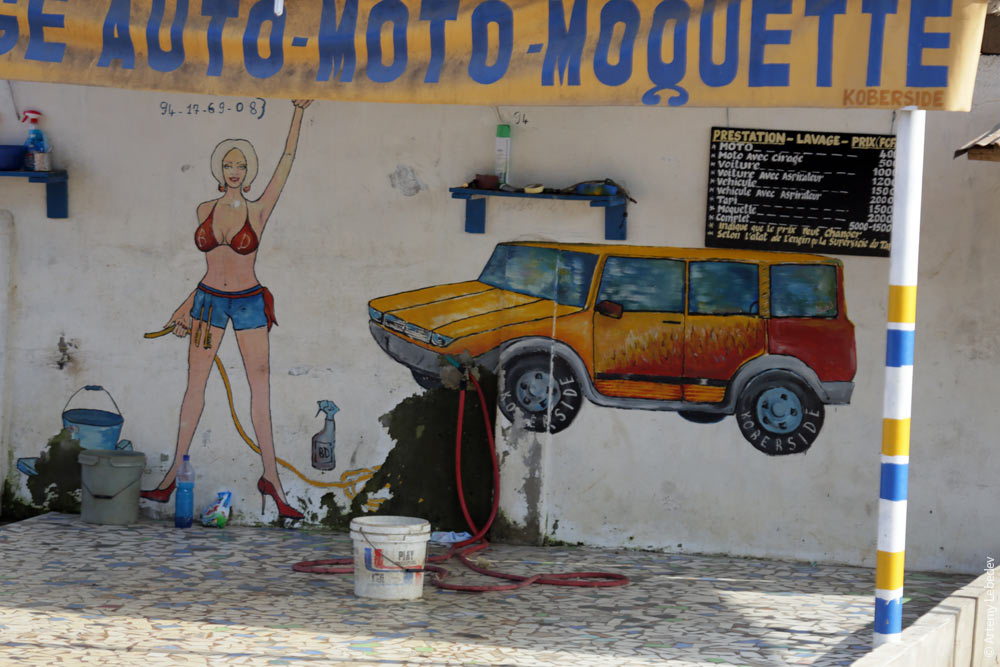 A driving school. 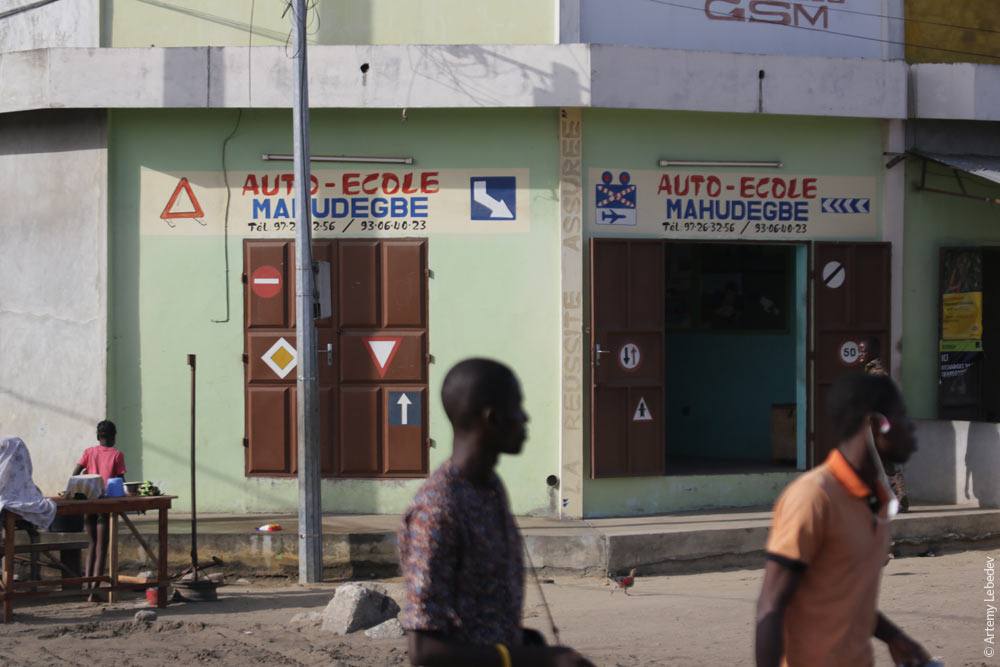 There are reserved lanes for motorcyclists. 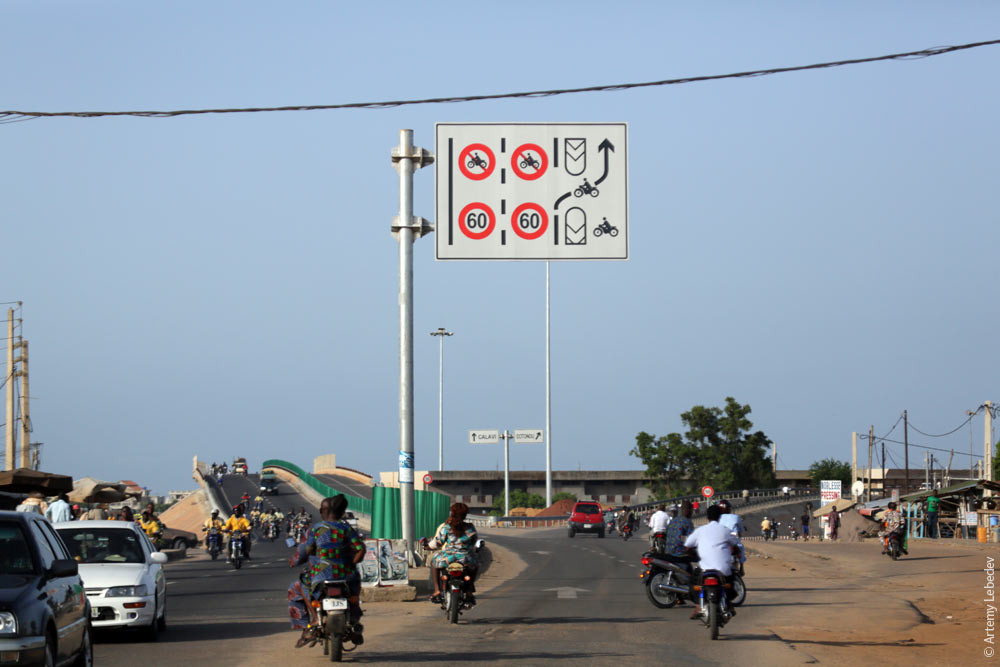 Despite this, the motorcyclists still all drive in the car lanes. 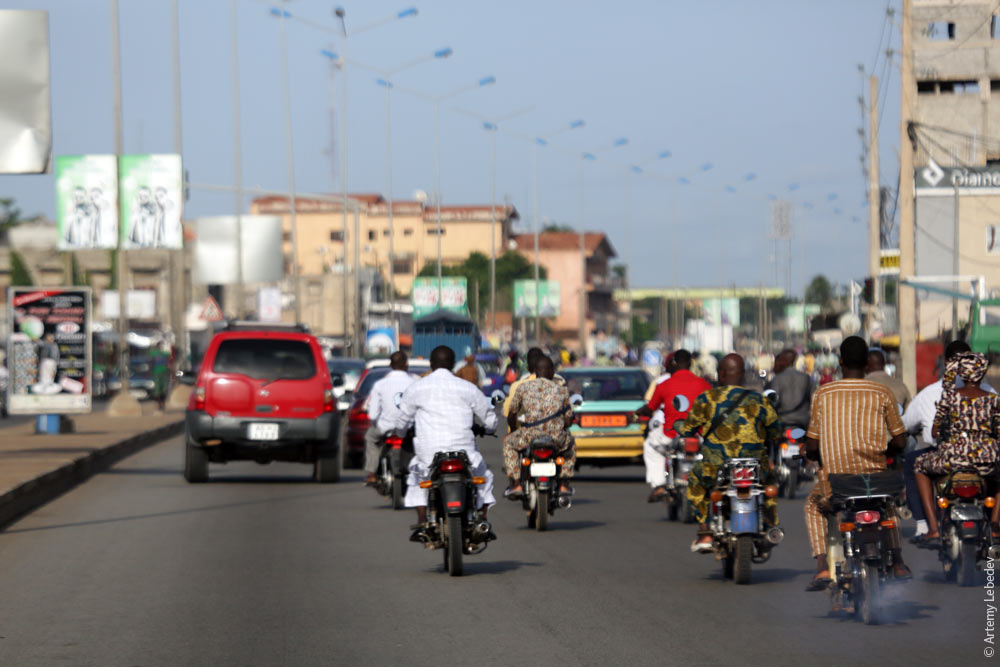 Architecture. 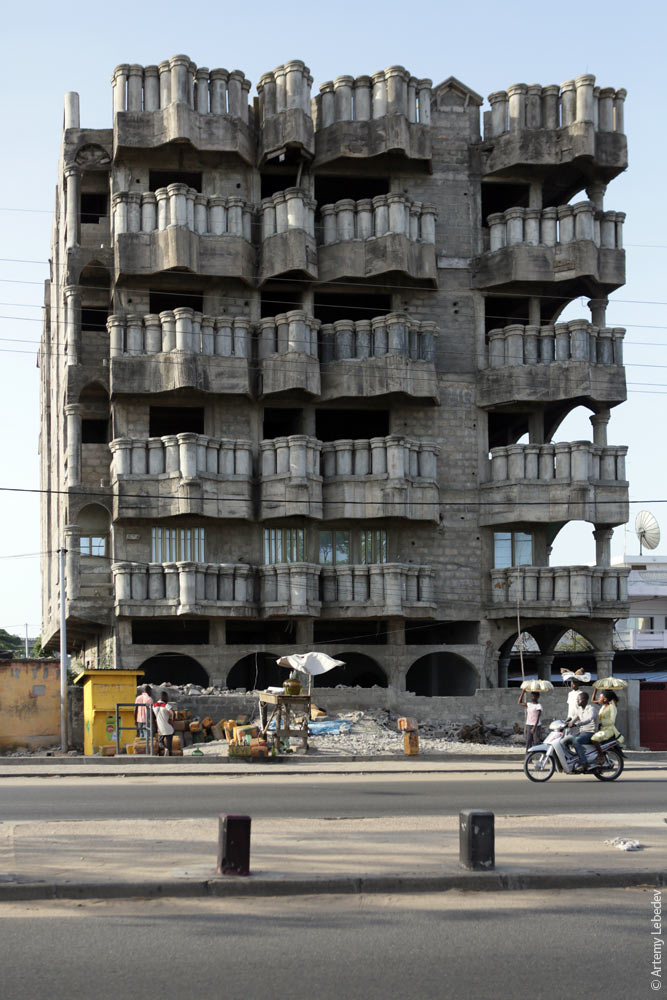 A fire hydrant. 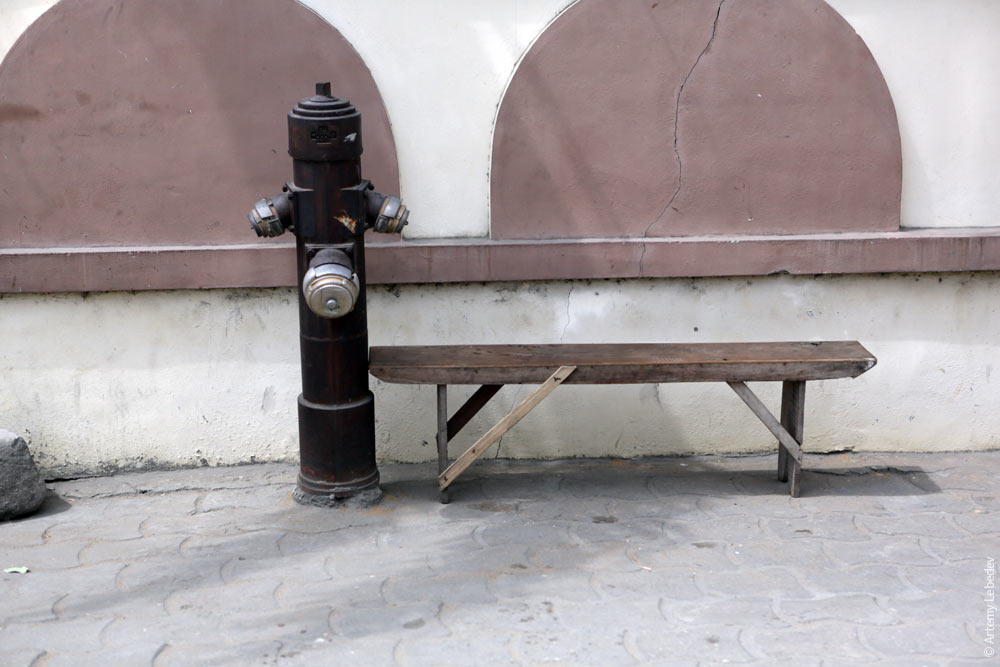 A post box. 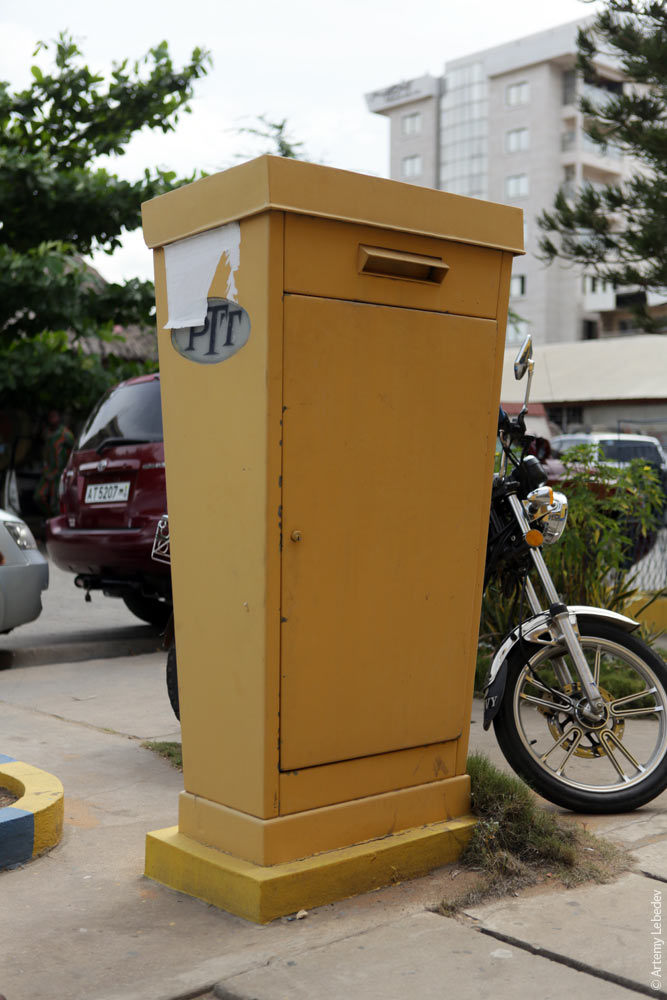 Downtown. 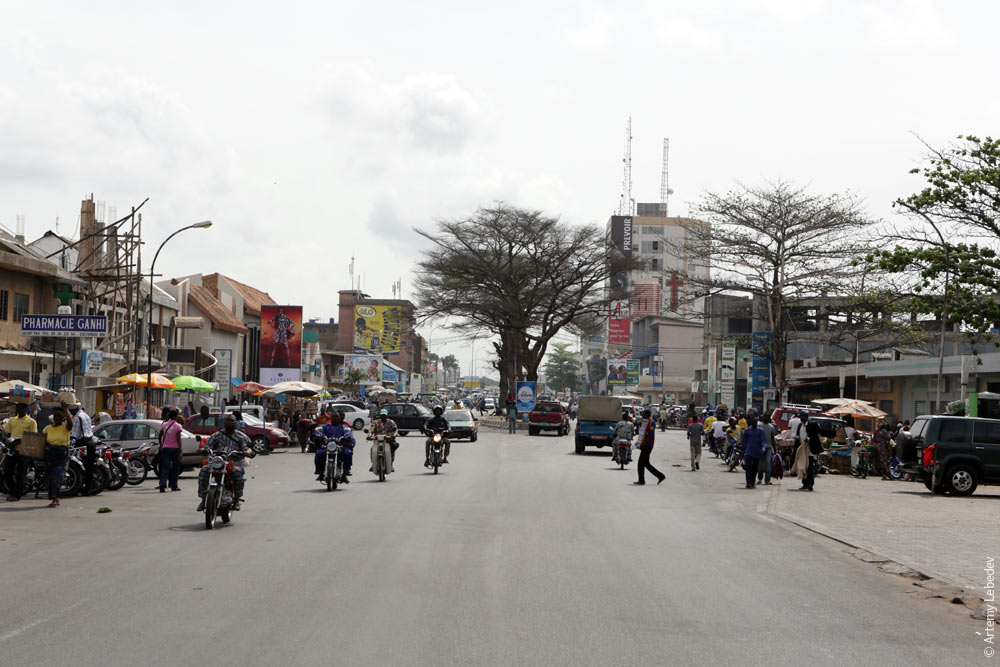 A newfangled bus stop. 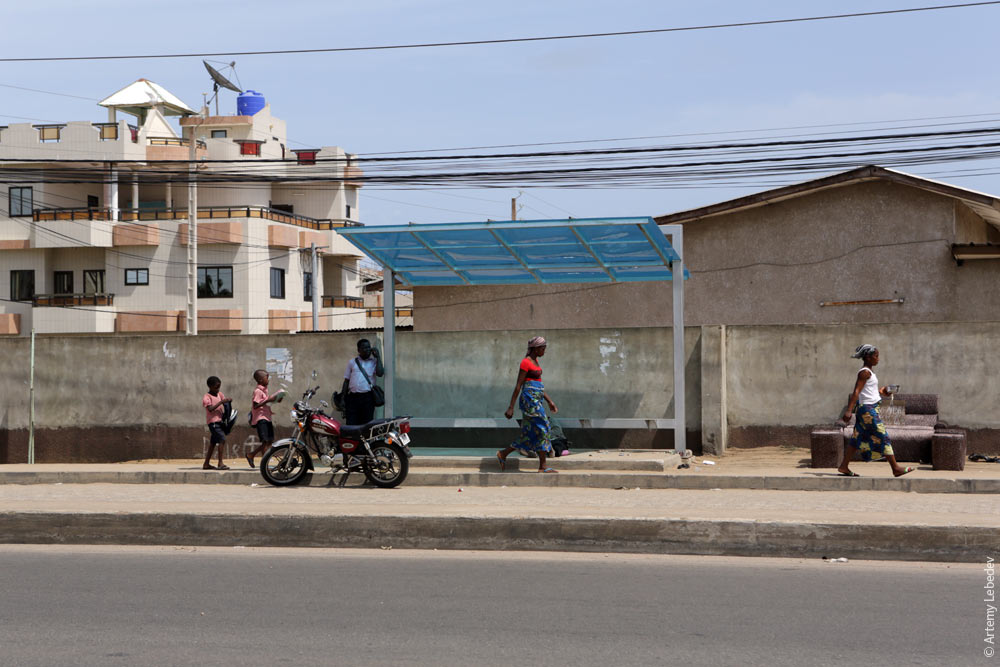 Pedestrian crossings. 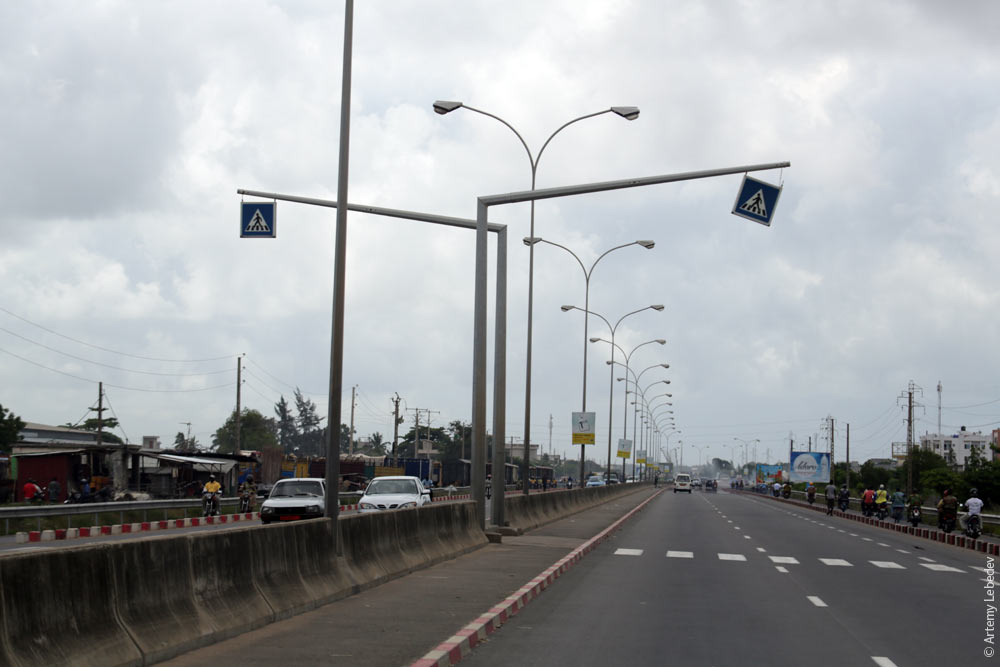 Porto-NovoMapThis is the capital. 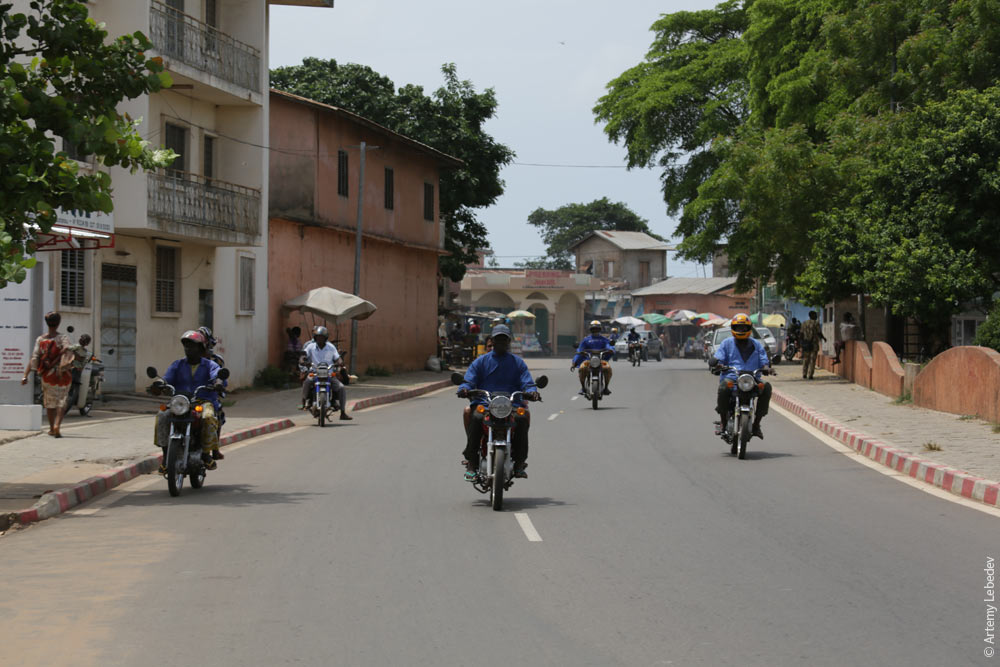 The traffic lights are just like the ones in Lyon. 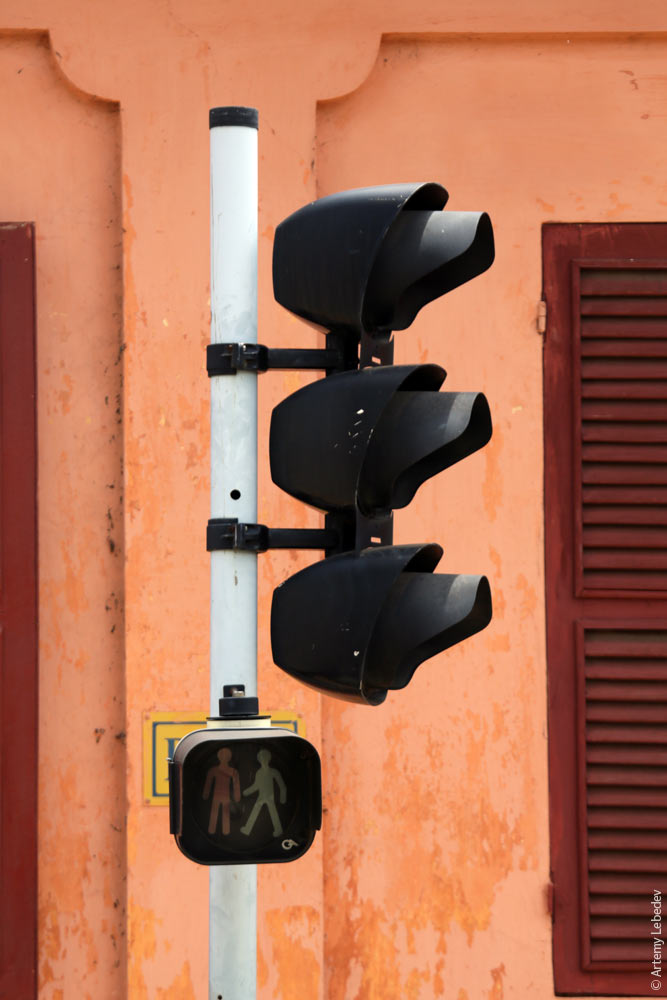 The bustling life of the capital. 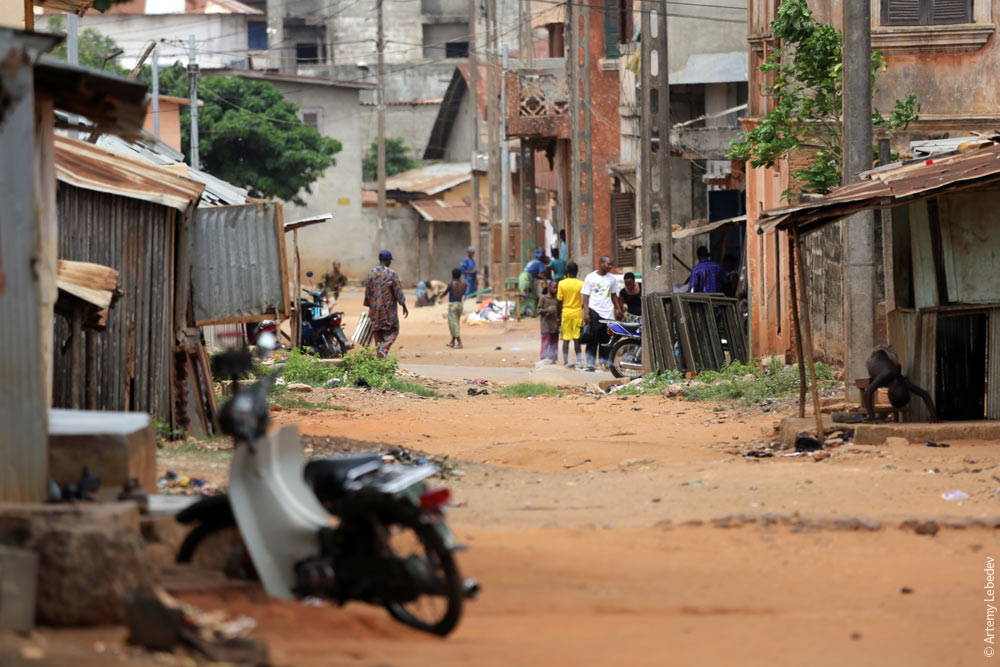 A visitor at a maternity hospital. 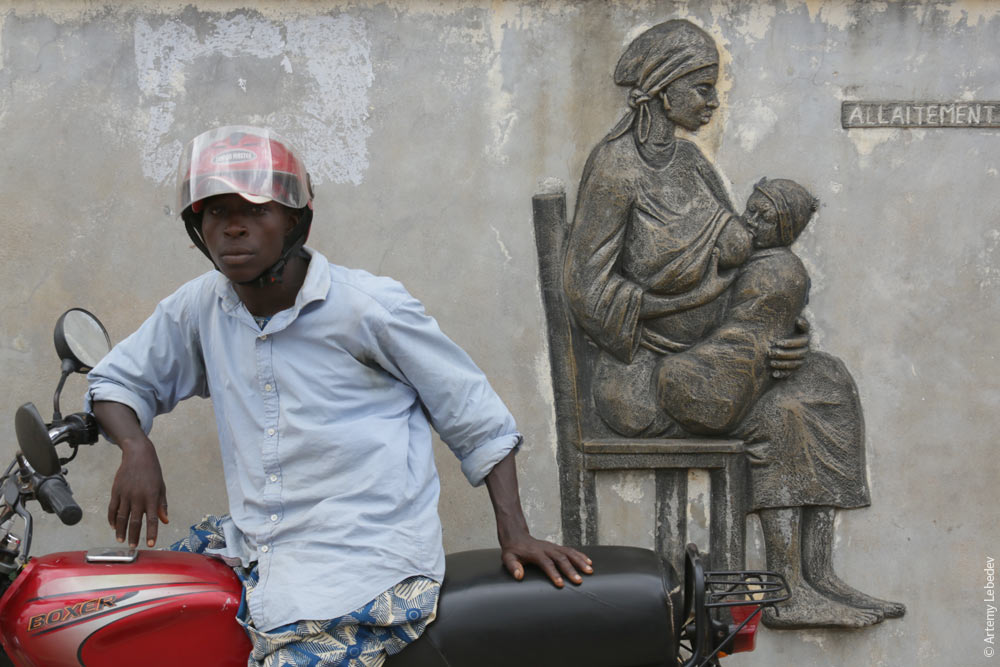 Urinating on this particular wall is prohibited. 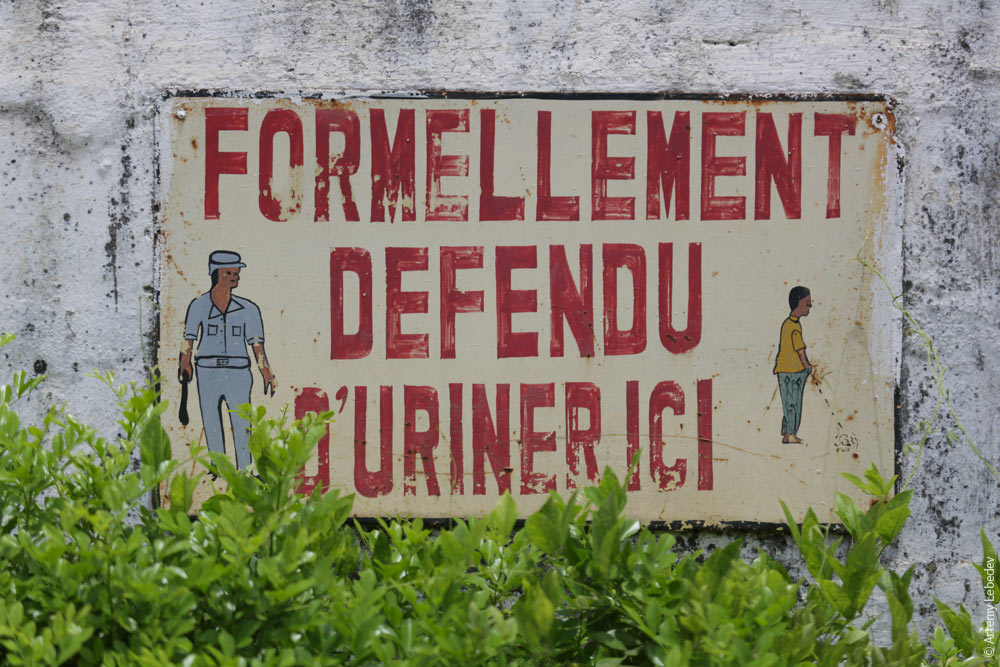 Trucks are prohibited. 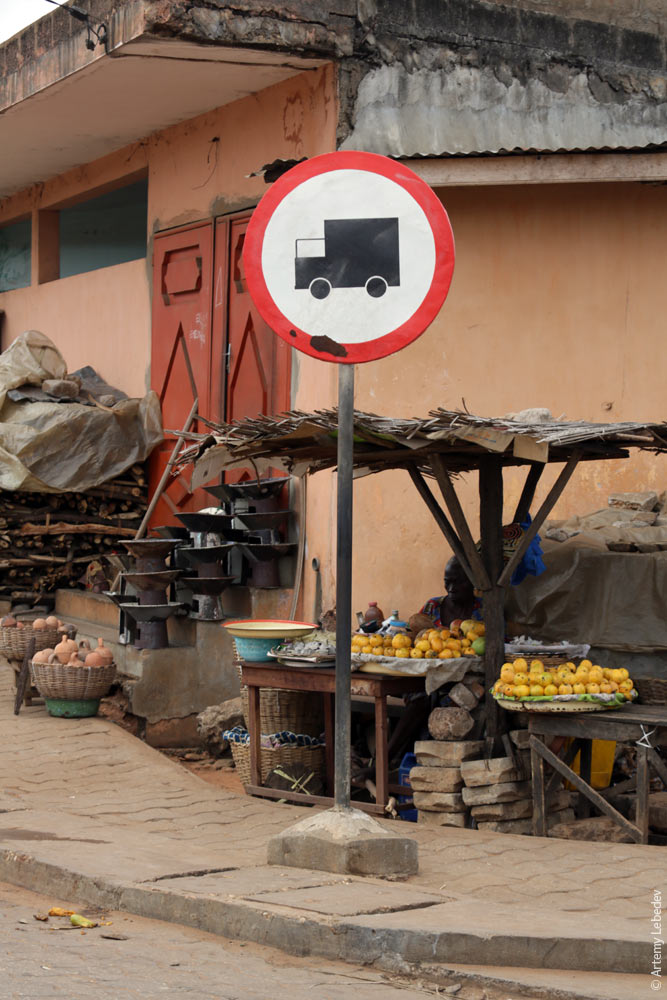 The power box has a complex textured surface that makes it impossible to stick flyers on it. 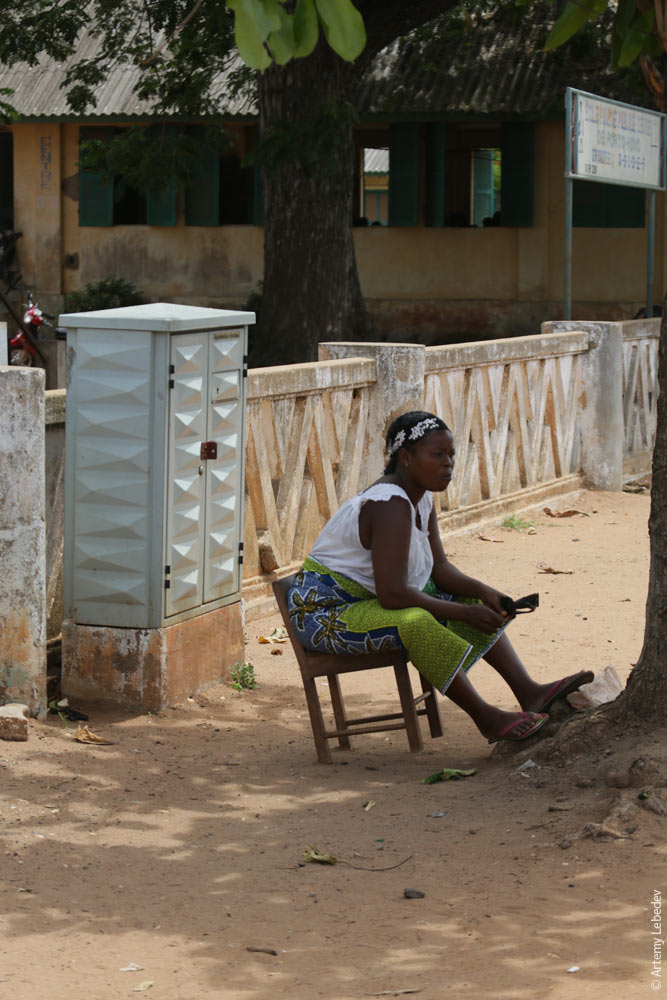 A gorgeous old French art deco post box. 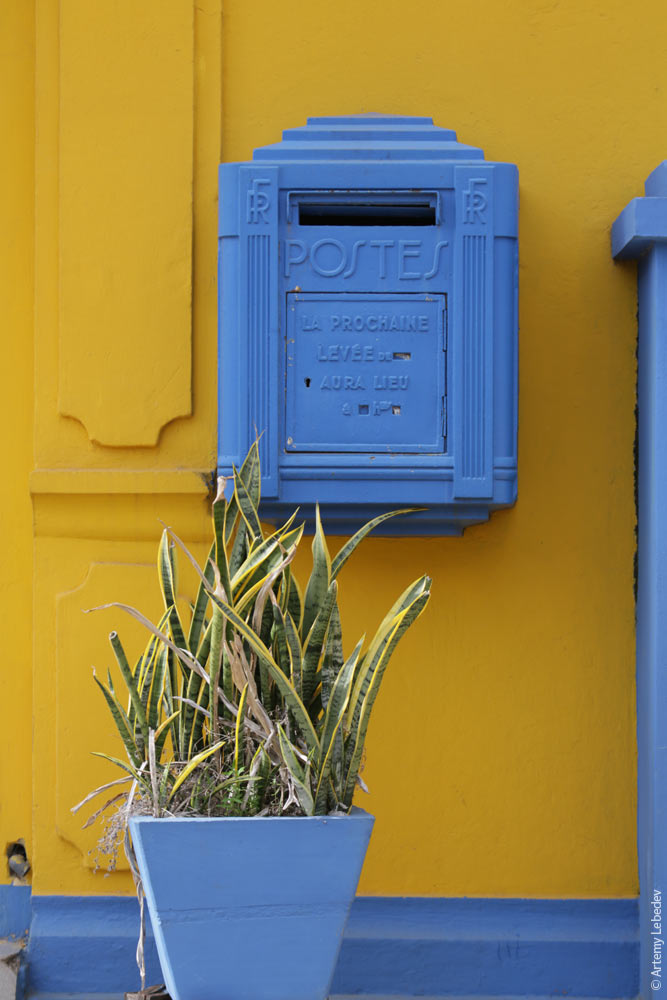 Many of those who were once shipped to Brazil as slaves subsequently returned, bringing back new surnames and building Brazilian-style houses. This is why today many houses have signs by the front gate with the name of the original owner. 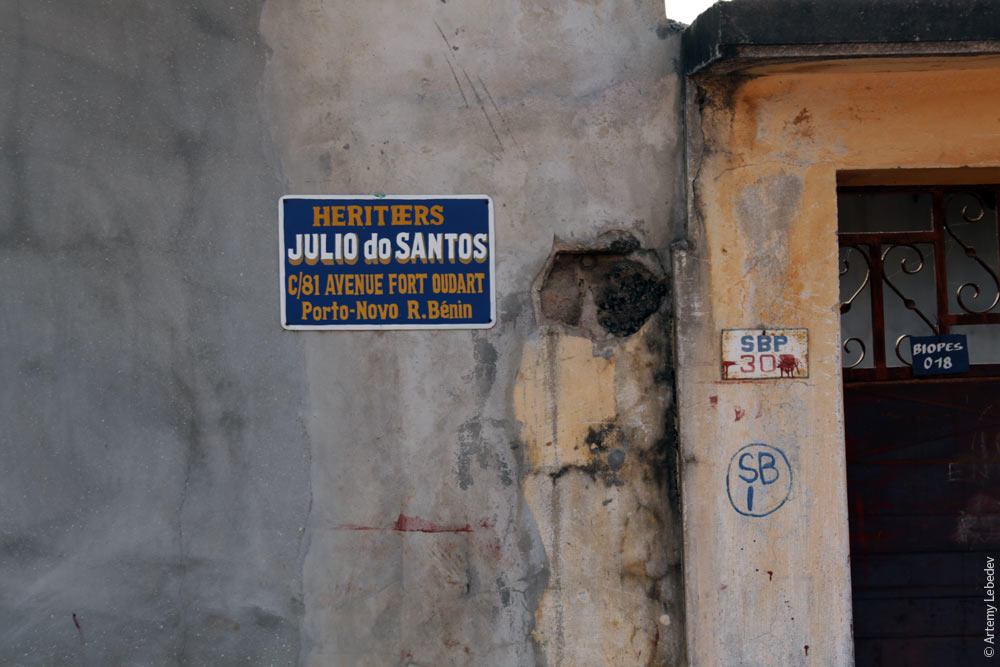 AbomeyMapAs soon as a car stops, it’s besieged by fruit-sellers. 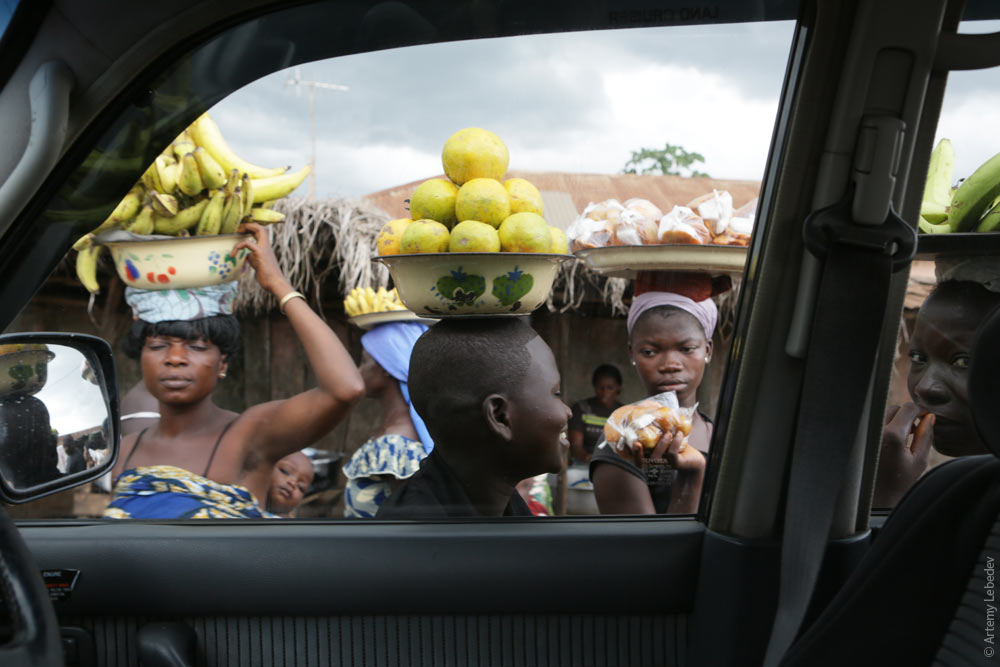 Coal and firewood for sale. 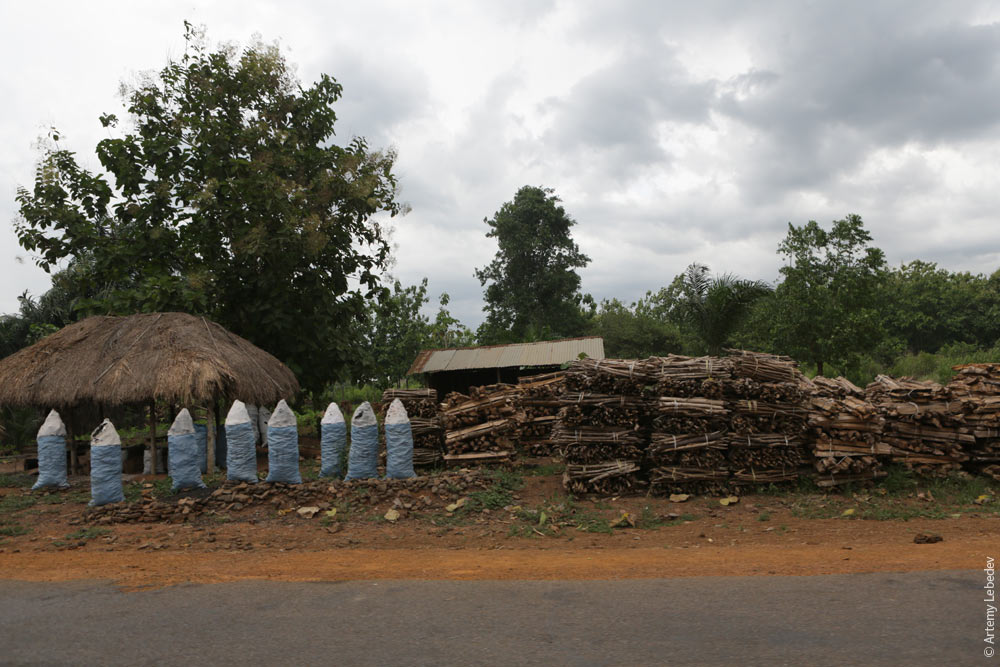 The soil everywhere in Benin is red, like a clay pot. 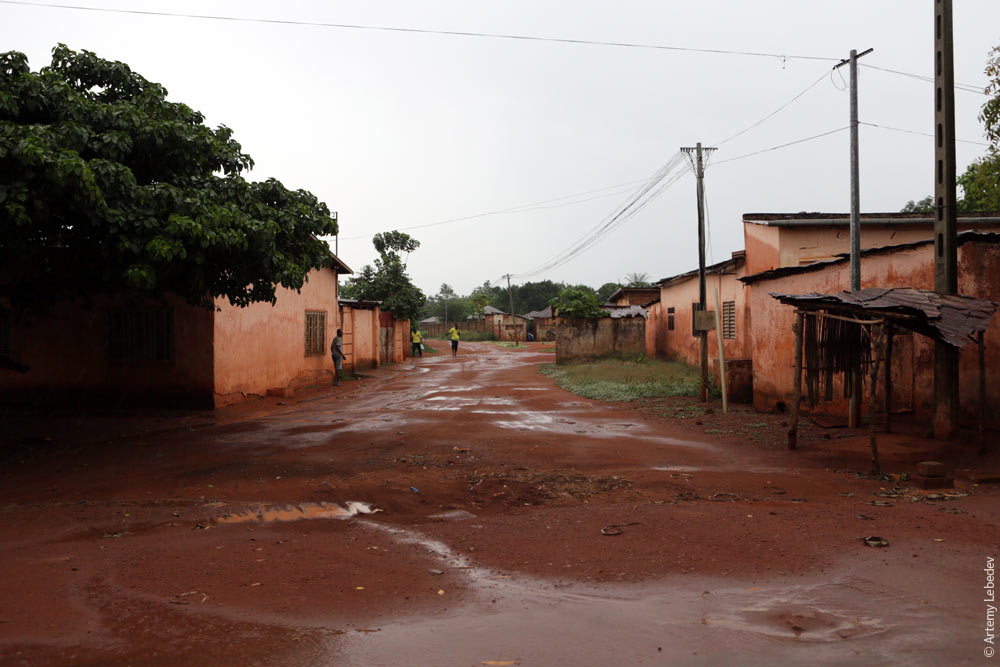 A post office.  Many buildings along the road are marked with an X. These will be torn down when the road gets widened and turned into a highway. 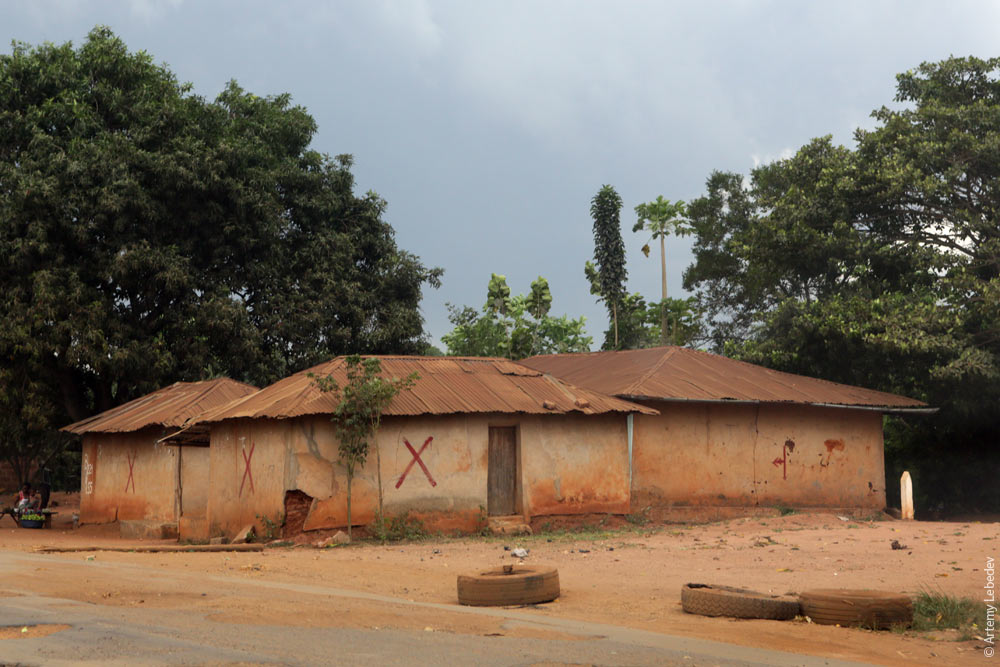 Most of the cars here are old Peugots. 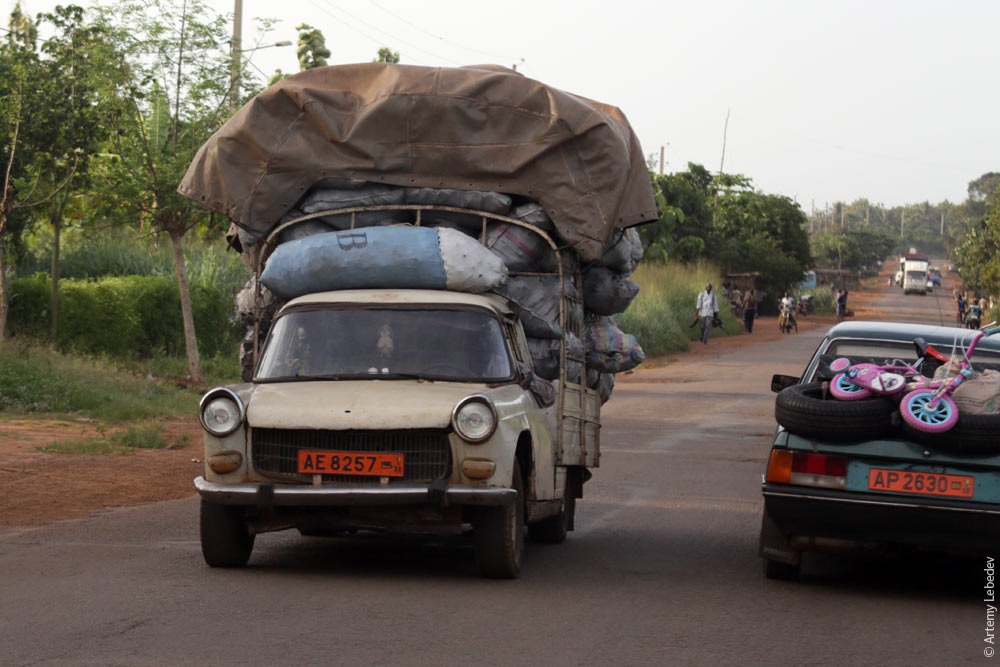 School uniforms are the color of very light coffee with milk. 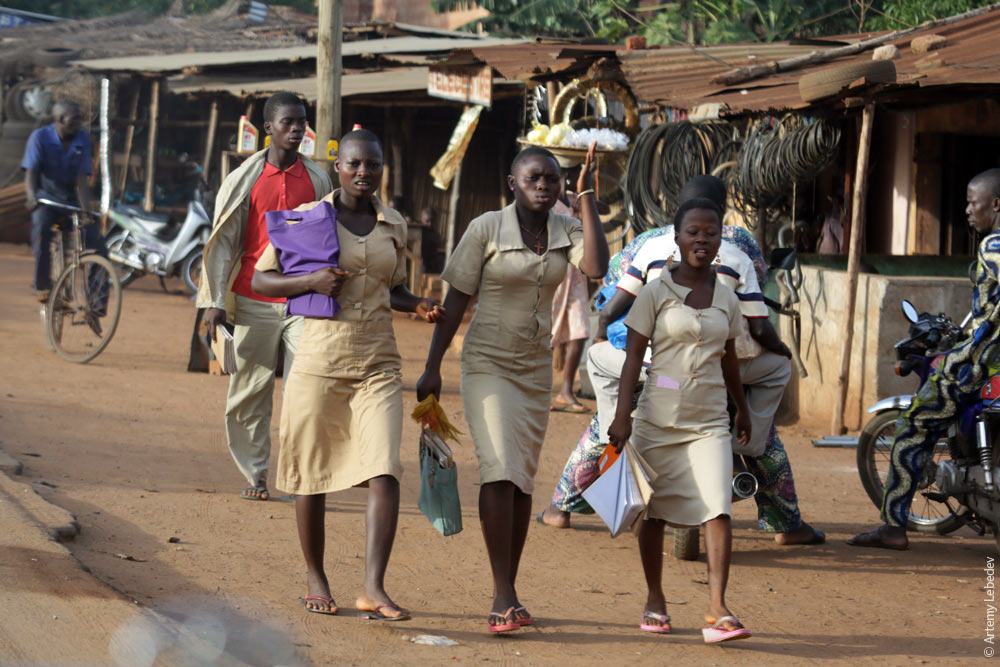 Abomey is renowned for its royal palaces. Every new king was supposed to build himself a new palace from the local clay. So now there’s an entire city full of palaces. 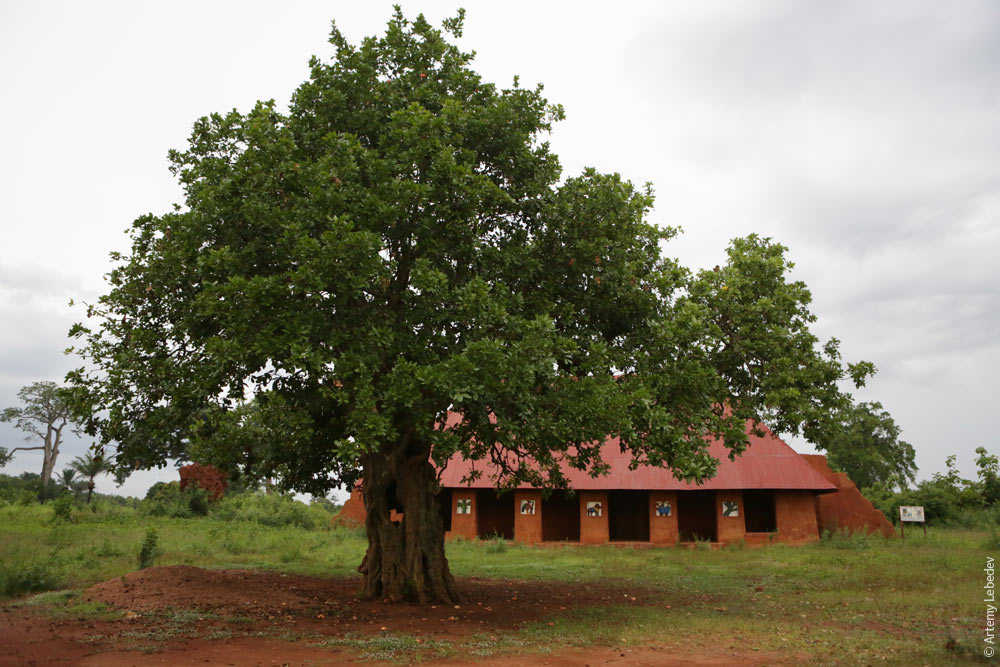 GanvieMapThis is the Venice of Benin. A village on the water. Women gather on the shore. 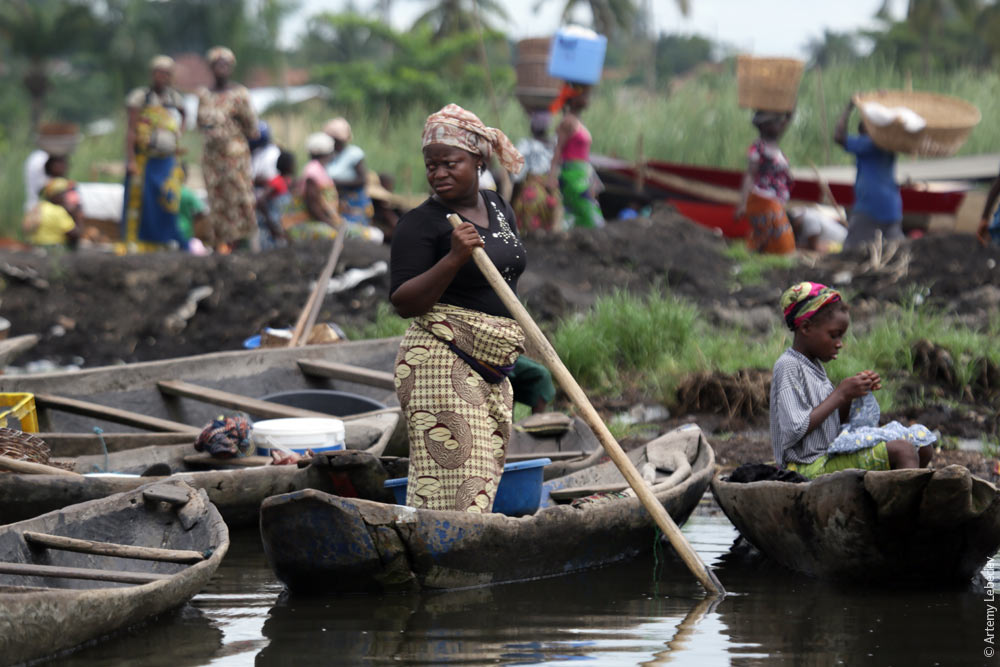 Get into their boats with their groceries.  And paddle home, assisted by sails made from colorful sheets. At the first sight of a camera, they immediately cover their faces with their hands or arms. 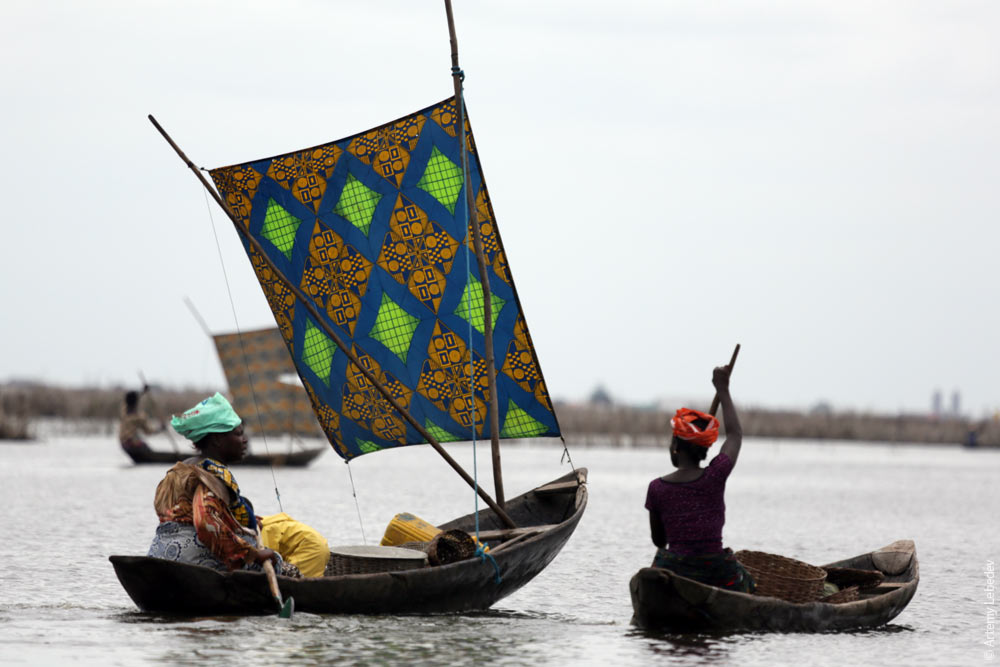 Meanwhile, the male population is standing neck-deep in the water, setting up fishing nets. 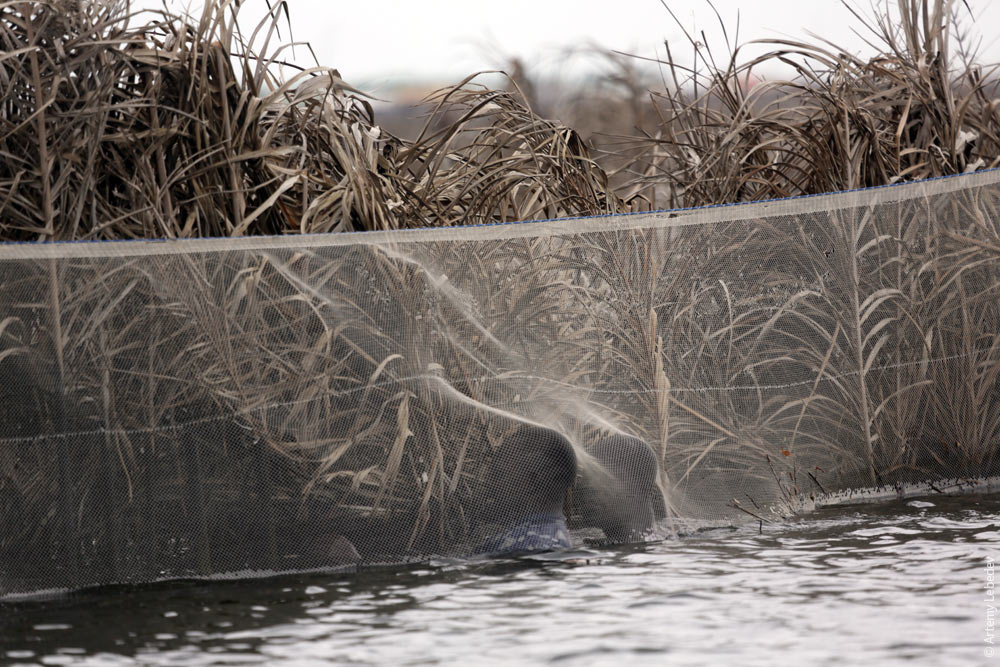 The village consists entirely of stilt houses on the water. The few rare islands are used as cemeteries. 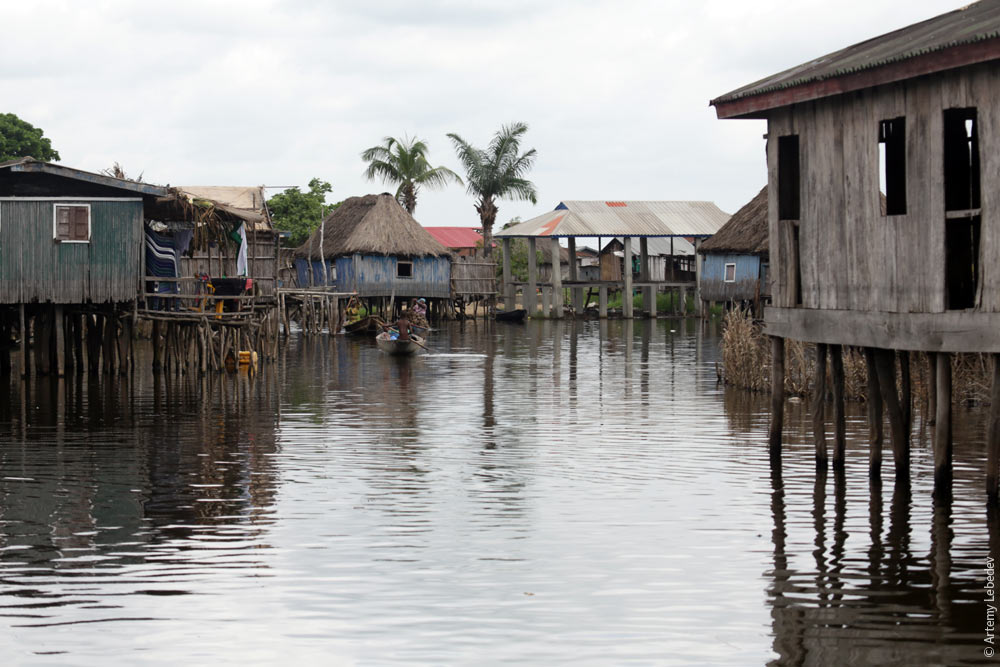 The village market is also located on the water. You swim up on a boat, haggle a bit, buy some bananas for breakfast. 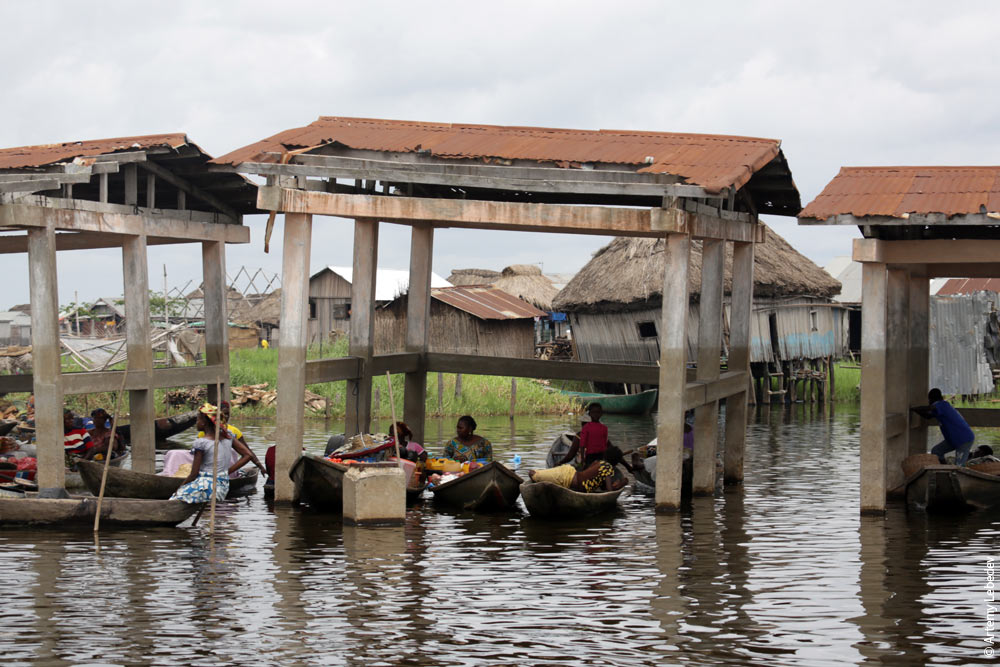 The men have cut down some brushwood. 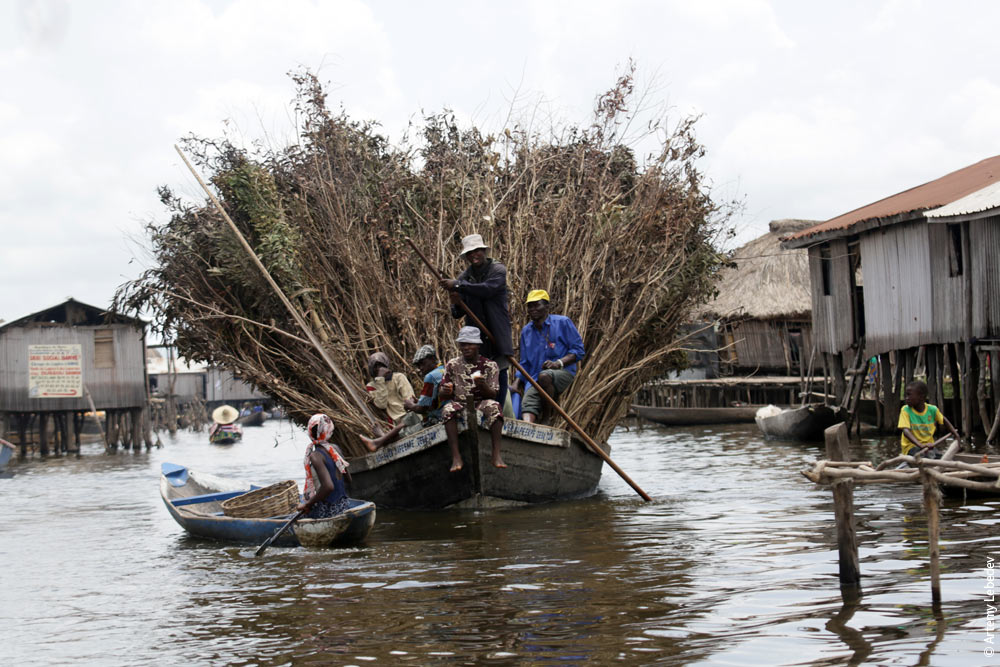 The brushwood is stuck into the lakebed. Over time, it rots, becoming food for the fish which is then caught. And so life in the village runs its course. 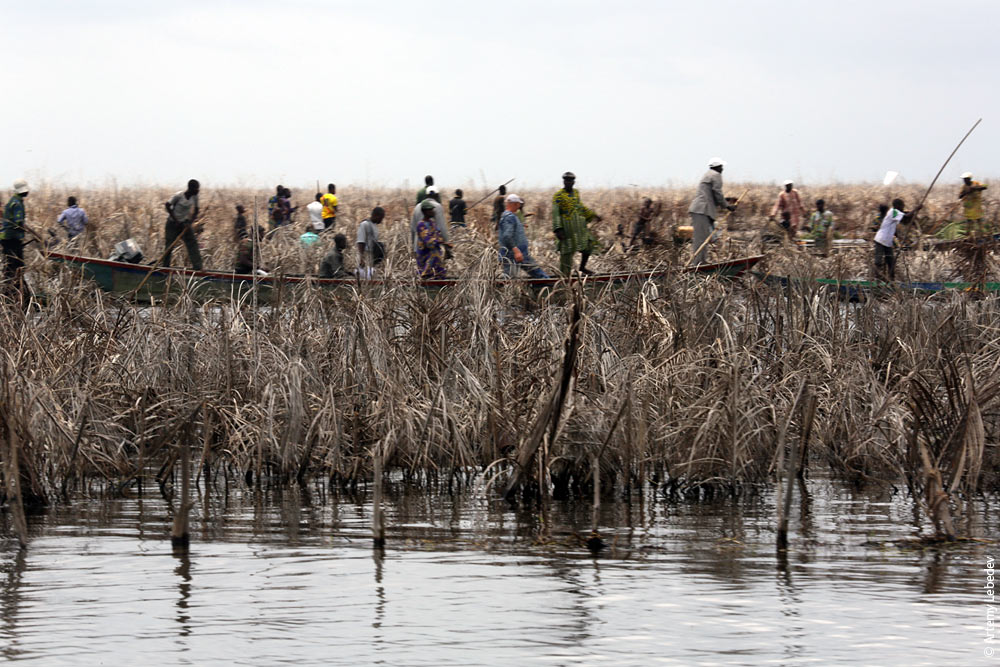 |